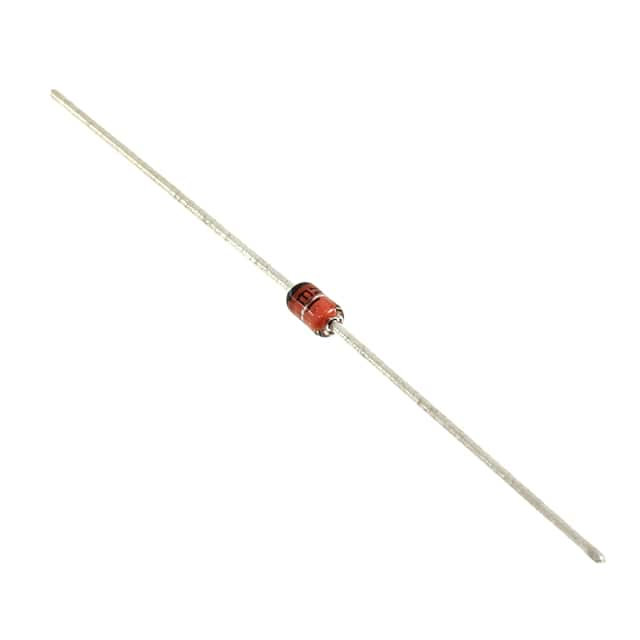1N4734A - Semiconductor Diode
Product Overview
Category:
1N4734A belongs to the category of semiconductor diodes.
Use:
It is commonly used in electronic circuits for voltage regulation and signal rectification.
Characteristics:
- Forward Voltage: 1.0V
- Power Dissipation: 1.0W
- Zener Voltage: 5.6V
- Operating Temperature: -65°C to +200°C
Package:
The 1N4734A is typically available in a DO-41 axial leaded package.
Packaging/Quantity:
It is usually packaged in reels or tubes, with quantities varying based on manufacturer specifications.
Specifications
- Manufacturer: Multiple manufacturers
- Maximum Zener Current: 49mA
- Reverse Leakage Current: 5µA
- Mounting Type: Through Hole
- Voltage Tolerance: ±5%
Detailed Pin Configuration
The 1N4734A has two pins, anode (A) and cathode (K), which are identified by the color band on the diode body.
Functional Features
The 1N4734A acts as a voltage regulator, maintaining a constant output voltage across its terminals when the input voltage varies.
Advantages and Disadvantages
Advantages:
- Precise voltage regulation
- Compact size
- Wide operating temperature range
Disadvantages:
- Limited current handling capability
- Voltage tolerance may not be suitable for some applications
Working Principles
The 1N4734A operates based on the principle of the Zener effect, where it allows current to flow in the reverse direction when the applied voltage reaches the Zener voltage.
Detailed Application Field Plans
The 1N4734A is widely used in various electronic devices and systems, including: - Voltage regulators - Power supplies - Signal clamping circuits - Overvoltage protection circuits
Detailed and Complete Alternative Models
Some alternative models to 1N4734A include: - 1N4733A (Zener voltage: 5.1V) - 1N4735A (Zener voltage: 5.9V) - 1N4736A (Zener voltage: 6.2V)
In conclusion, the 1N4734A semiconductor diode is a crucial component in electronic circuits, providing precise voltage regulation and finding applications in diverse fields due to its compact size and wide operating temperature range.
[Word Count: 308]
Lista 10 Vanliga frågor och svar relaterade till tillämpningen av 1N4734A i tekniska lösningar
What is the 1N4734A diode used for?
- The 1N4734A is a Zener diode commonly used for voltage regulation and stabilization in electronic circuits.
What is the voltage rating of the 1N4734A diode?
- The 1N4734A has a nominal Zener voltage of 5.6V, making it suitable for applications requiring a stable 5.6V reference voltage.
How does the 1N4734A diode work?
- The 1N4734A operates in the reverse-biased breakdown region, allowing it to maintain a constant voltage drop across its terminals, providing voltage regulation.
Can the 1N4734A be used for voltage clamping?
- Yes, the 1N4734A can be used for voltage clamping to limit the maximum voltage in a circuit to its Zener voltage (5.6V).
What are typical applications of the 1N4734A diode?
- Typical applications include voltage regulation in power supplies, overvoltage protection, and voltage reference circuits.
What is the power dissipation rating of the 1N4734A?
- The 1N4734A has a power dissipation rating of 1.0W, allowing it to handle moderate power levels in applications.
Is the 1N4734A polarity sensitive?
- Yes, the 1N4734A is polarity sensitive and must be connected in the correct orientation to function properly.
What is the temperature coefficient of the 1N4734A?
- The temperature coefficient of the 1N4734A is typically around -2mV/°C, indicating a relatively stable voltage over a range of temperatures.
Can multiple 1N4734A diodes be connected in series or parallel?
- Yes, multiple 1N4734A diodes can be connected in series to create higher Zener voltages or in parallel to increase current-handling capability.
Are there any precautions to consider when using the 1N4734A?
- It's important to ensure that the maximum power dissipation and current ratings are not exceeded, and to observe proper handling to prevent electrostatic damage during assembly.


